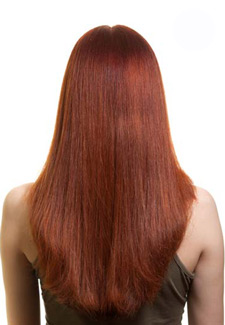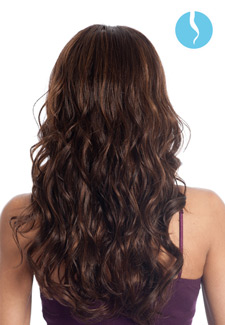By Rati Murwisi
The natural hair journey was harder than I had initially expected. From the myriad of Pinterest posts, articles and colourful YouTube videos with chemistry 101 happening in the kitchen, I discovered that there is a LOT to learn about natural hair care.
The beginning of the journey starts with your hair type. There are four hair types; 1-4 which are divided into A, B and C.

Type 1: Straight Hair
Straight hair reflects the most sheen and it is also the most resilient hair of all of the hair types. It is hard to damage and is quite challenging to curl this hair texture. Because the sebum (natural oil produced in the sebaceous glands of the scalp) gently works its way from the scalp to the ends without the interference of curls or kinks, it is the most oily hair texture of all.

Type 2: Wavy Hair
This hair type lies somewhere between straight and curly hair. It also imparts sheen more than curly hair, but less than straight hair. The further down the hair wave spectrum you go, the less sheen the hair will impart. Wavy hair is typically more prone to frizz. While type A waves can easily alternate between straight and curly styles, type B and C wavy hair is resistant to styling.

Type 3: Curly Hair
If you pull a strand of a type 3 curly hair, you will notice that it has a definite S shape. Granted, the S may be a lower case s or upper case S, or it may even resemble a Z on some occasions. However, there is a definite curl pattern in place, with our without products. This hair type is full bodied, climate dependent (humidity = frizz), and damage prone. Lack of proper care renders dull curls.

Type 4: Coily Hair
Despite many misconceptions, this tightly coiled hair is quite fine and fragile. It is wiry, and delicate by nature. Each strand usually has a zig-zag pattern. Sometimes referred to as kinky hair, it is the driest hair type, thus it is more prone to breakage and requires a gentle touch. A misconception exists that this hair type does not grow. Kinky hair grows at the same rate as other textures, however, if not treated properly, it breaks more than other textures. Treat this hair type like a fine silk blouse – cleanse gently, detangle softly, and avoid harsh chemicals.
Most women of African descent have type 4 hair, hence you will find that most YouTubers or bloggers talk about talk about 4C hair. Grab a mirror use your fingers to gently take a closer look at your hair, you may find that you have two or three types which is not uncommon. This is important to note as this largely affects the products which you should use on our hair and thus the hair care regimes you ought to adopt.
Is your interest piqued? To learn more about the natural journey follow Awa by Ayana on Facebook and Instagram.

